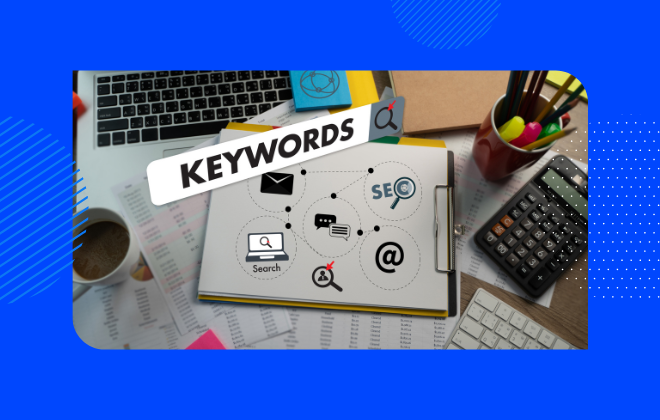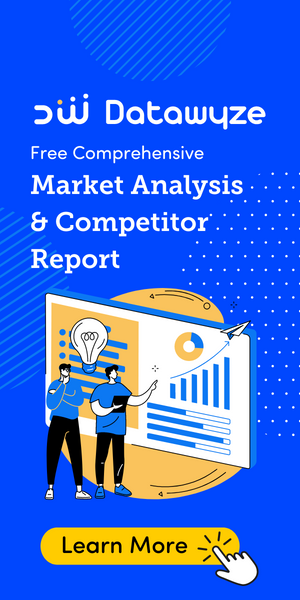Keyword optimization is the process of selecting and targeting the right keywords for your Google Ads search campaigns. By optimizing your ads with the right keywords, you can increase your ad visibility and attract more clicks from your target audience. In this article, we will discuss ten essential tips for maximizing your Google Search Ads with effective keyword optimization.
1. Understand Your Target Audience
Before you start selecting keywords for your Google Ads search campaigns, it’s essential to understand your target audience. Who are they? What are their interests? What keywords are they likely to use when searching for products or services similar to yours?
By understanding your target audience, you can create targeted and effective ads that resonate with their needs and interests. This will help you to attract more clicks and conversions, and improve your overall ad performance.
2. Conduct Thorough Keyword Research
Keyword research is the foundation of effective keyword optimization. It’s crucial to conduct thorough research to identify the keywords that your target audience is using to search for products or services like yours. To conduct keyword research, you can use tools like Google’s Keyword Planner, Ahrefs, or SEMrush. These tools can help you identify high-traffic keywords, long-tail keywords, and negative keywords.
High-traffic keywords are those that have a high search volume, and therefore, high competition. Long-tail keywords, on the other hand, are more specific and less competitive. They may have a lower search volume, but they can be more targeted and relevant to your specific audience. Negative keywords, meanwhile, are keywords that you don’t want your ads to appear for.
3. Optimize Your Ad Copy
Ad copywriting is another critical aspect of effective keyword optimization. Your search ad copy should be relevant, compelling, and targeted to your audience. It should also include your target keywords in the ad headline, description, and URL.
When writing ad copy, keep in mind the benefits of your product or service, and highlight them in your ad. Use persuasive language to convince your audience to click on your ad and take action. Don’t forget to include a clear call-to-action, such as “Buy Now” or “Learn More.”
4. Target the Right Keywords
After conducting keyword research and optimizing your ad copy, it’s time to target the right keywords. When selecting keywords, consider the search intent of your audience. Are they looking for information, or are they ready to make a purchase?
For example, if your target audience is searching for “best running shoes,” they may be in the research phase of the buying process. In this case, you may want to target keywords like “best running shoes reviews” or “best running shoes for beginners.”
On the other hand, if your audience is ready to make a purchase, they may be searching for keywords like “buy running shoes” or “running shoes for sale.” In this case, you may want to target keywords that include commercial intent, such as “buy,” “order,” or “purchase.”
5. Set the Right Bids
Cost-per-click (CPC) is the amount you pay every time someone clicks on your ad. It’s essential to set the right bids to ensure that your ads are visible to your target audience. When setting bids, consider your ad placement, quality score, and competition. Ad placement refers to where your ad appears on the search results page. The higher your ad placement, the more visible it is to your target audience. Remember, it’s important to determine your bid strategy based on your goals, whether that be generating awareness, increasing clicks and traffic to your site, or conversions.
6. Improve Your Quality Score
Quality score is a metric used by Google to measure the relevance and quality of your ads and landing pages. Quality score is calculated based on the combined performance of 3 components:
- Expected clickthrough rate (CTR): The likelihood that your ad will be clicked when shown.
- Ad relevance: How closely your ad matches the intent behind a user’s search.
- Landing page experience: How relevant and useful your landing page is to people who click your ad.
Each component is evaluated with a status of “Above average,” “Average,” or “Below average.” This evaluation is based on a comparison with other advertisers whose ads showed for the exact same keyword, over the last 90 days. A higher quality score can lead to a lower cost-per-click and a better ad position. To improve your quality score, focus on creating relevant and targeted ads that align with the search intent of your audience.
Competition is another factor to consider when setting bids. If your target keywords have high competition, you may need to set a higher bid to ensure that your ads are visible to your audience.
For more information about Quality Scores, be sure to check out the Google Ads Help Center.
7. Monitor Your Ad Performance Metrics
To maximize the effectiveness of your Google Ads Campaigns, it’s essential to monitor your ad performance metrics regularly. This will help you to identify what’s working and what’s not and make necessary adjustments to improve your results.
Some essential ad performance metrics to monitor include click-through rates (CTR), conversion rates, cost-per-click (CPC), and return on investment (ROI). CTR measures the percentage of clicks on your ads compared to the number of impressions. Conversion rates measure the percentage of visitors who take a desired action, such as making a purchase or filling out a form.
CPC measures the cost of each click on your ad, while ROI measures the return on investment of your ad campaigns. The average cost per click in Google Ads is between $2 and $4, while the most expensive keywords can cost upwards of $501. By monitoring these metrics, you can identify areas where you need to improve and optimize your search campaigns for better results.
8. Use Negative Keywords
Negative keywords are keywords that you don’t want your ads to appear for. By using negative keywords, you can filter out irrelevant searches and ensure that your ads are only shown to your target audience.
For example, if you sell luxury watches, you may want to exclude searches for “cheap watches” or “affordable watches” to ensure that your ads are only shown to people who are interested in buying luxury watches.
9. Focus on Long-Tail Keywords
Long-tail keywords are longer and more specific phrases that are less competitive than high-traffic keywords. While they may have a lower search volume, they can be more targeted and relevant to your audience. By focusing on long-tail keywords, you can attract more qualified leads who are more likely to convert into customers. Long-tail keywords can also help you to reduce your cost-per-click and improve your quality score.
10. Optimize Your Landing Pages
Optimizing your landing pages is a critical component of maximizing the effectiveness of your Google Ads campaigns. A landing page is the first page that a user sees after clicking on your ad, and it’s essential to make a good first impression. Here are some tips for optimizing your landing pages:
- Make it Relevant: Make sure that your landing pages include your target keywords in the headline, meta description, and content. Use clear and compelling language to explain the benefits of your product or service and why it’s the best choice for your audience.
- Keep it Simple: It’s crucial to optimize your landing pages for your Google Ads campaigns. Your landing pages should be relevant, targeted, and designed to convert visitors into customers. Avoid clutter and distractions that can take away from your message and confuse the user.
- Use Visuals: Use images and videos to make your landing page more visually appealing and engaging. This can help to grab the user’s attention and keep them on the page.
- Highlight Benefits: Make sure that your landing page highlights the benefits of your product or service. Focus on the problem that you’re solving and how your product or service can make the user’s life better.
- Use Clear Calls-to-Action: Include a clear call-to-action, such as “Buy Now” or “Learn More,” and make sure that your landing pages are mobile-friendly and load quickly. By optimizing your landing pages, you can improve your conversion rates and maximize the effectiveness of your Google Ads campaigns.
- Optimize for Mobile: Make sure that your landing page is optimized for mobile devices. Many users will be accessing your landing page on their mobile phones, and a poorly optimized page can hurt your conversion rates.
- Test and Iterate: Finally, it’s essential to test and iterate on your landing pages. Use A/B testing to try out different headlines, copy, visuals, and calls to action to see what works best. Continuously iterate and improve your landing pages to maximize your conversion rates.
By following these tips, you can optimize your landing pages for your Google Ads campaigns and improve your conversion rates. A well-optimized landing page can be the difference between a successful ad campaign and wasted ad spend.
Conclusion
In conclusion, keyword optimization is critical to maximizing your Google Ads campaign performance and online advertising ROI. By focusing on the right keywords, ad copywriting, ad targeting, and ad performance metrics, you can create effective PPC advertising campaigns that drive more traffic and conversions.
It’s important to remember that keyword optimization is an ongoing process, and you should continuously monitor and adjust your campaigns to ensure they are performing optimally. This involves performing regular keyword research, testing different ad copy, monitoring your quality score and ad rank, and analyzing your ad performance metrics.
Furthermore, optimizing your landing pages is just as crucial as optimizing your ad campaigns. Your landing pages should be relevant, simple, and visually appealing, highlight benefits, use clear calls to action, and be optimized for mobile devices.
If you’re struggling to optimize your Google Ads campaigns, consider reaching out to a reputable agency like Datawyze. Our team of PPC and search experts can help you with keyword research, ad copywriting, ad targeting, landing page optimization, and more. By working with us, you can ensure that your Google Ads campaigns are optimized for maximum effectiveness and ROI.
In summary, keyword optimization is the foundation of effective PPC advertising campaigns, and optimizing your landing pages is just as important. By following the tips outlined in this article and working with a reputable agency like Datawyze, you can maximize your Google Ads campaigns’ success and achieve your online advertising goals.
References:
1. How Much Does Google Ads Cost in 2022? – WordStream





